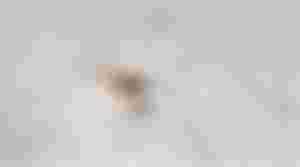The spider in question here is Pholcus phalangioides, a species that we most often come across in our homes, attics and basements. This species of spider lives on all continents and in all latitudes. Specimens have also been found in rather remote and inhospitable parts of the planet, where temperatures and other extremes prevail.
A few words about spiders
Some general determinants and categorizations related to spiders:
- spiders (they are not insects but belong [with insects and crustaceans]) to arthropods which are again a subgroup of invertebrates. They differ from insects primarily in that they have eight legs [insects six] and a body divided into two parts [insects three].
- there are about 40,000 registered species, although the final number has not been determined yet. It is estimated that only about 30% of the actual number of species has been discovered in North America and about 80% in Europe.
- Only about 30 species of known spiders have venom dangerous to humans, and only a few of those 30 species are deadly.
- as they belong to invertebrates, they have an exoskeleton, a solid substance [cuticle] that envelops their body and which consists of protein and solid chitin. During life, due to the growth of the body by which the non-expandable sheath becomes too tight, they are 'changed' several times, ie they discard the old sheath [snake-like].

- they are most active during the night and rely more on senses other than sight. Some species that are more active during the day have relatively good vision at short distances [between 10 and 20 cm].
- belong to predators that mostly hunt insects. The way they digest food is also specific. With them, this process begins outside their own body. When prey is incapacitated by injecting venom, spiders inject fluid containing digestive enzymes through the same wound. Enzymes break down the victim's tissue and turn it into a liquid mass that spiders suck into their not particularly developed internal digestive system. The nutrients collected in this way last a very long time so the spider can live for weeks and even months without catching new prey.
- Certainly the most interesting feature of these creatures is the ability to make threads and knit a net. Silk threads are made up of the protein fibroin, the same substance that makes up the silk produced by ‘silkworms’. Depending on the species, each spider has two to eight glands, each of which produces different threads: for catching prey, making web carriers, knitting webs, making egg shells, etc. Each type of thread has different properties depending on the purpose it serves. Their diameter is very small and is about 0.01mm. Despite such a small diameter and very low specific weight, the spider's thread is equal in strength to the corresponding nylon thread with far greater elasticity. Thanks to these characteristics, the spider's web has enough strength and elasticity to withstand the impact of insects in flight without breaking.

Pholcus phalangioides - house spider
The female that was the reason for writing this text belongs to one of the most fragile species of spiders. As you probably know, their legs are very thin and long. The outer shell is so thin that it is transparent, so even with a weaker microscope, the movement of body fluids and other organs can be observed in a living individual. Nets of this type are not particularly interesting creations and most often resemble a partially deformed sheet or some other spread fabric / cloth. The spider will attack any object that touches the web unless of course it seems too big. The house spider has no 'prejudices' when it comes to nets or captured prey of other relatives, so it is not uncommon to attack another relative and throw him out of their nets, which he later continues to use to catch prey.
The body of each of them at the time of shooting was <1mm in diameter ...
As soon as the unfortunate insect sticks to the web, the spider approaches with lightning speed and starts to wrap it with its threads. When the insect is completely immobilized, the spider injects venom and then digestive enzymes. Sucking out the half-cooked contents can take longer than a day and the spider is able to extract the entire contents in this way, eg flies through only one of its legs.
In case of danger, this type of spider applies a special technique of confusing the opponent by spinning around its axis at high speed, hanging on only one thread. In this way, due to the speed of rotation, the spider becomes completely invisible in a short time, which you can check yourself by simply touching the web. Female spiders are astonishingly caring mothers and whenever I got too close to the camera for macro shots the mother fearlessly ‘ran out’ in front of her young.
Serve your room spider with a fresh mosquito [the spider will not react to a dead insect]
So much for this occasion about me very interesting and most people at least unsympathetic creatures. However, I suggest that you, if you have the opportunity, look at them a little more carefully. Who knows, you might get the same fascination. The English even have the saying 'If you want to live and thrive,let the spider go its own way '. The specimens you can find in our area are completely harmless. Among the uninformed, there is a popular prejudice about bites that do not look like mosquito bites and which are attributed to spiders. Such 'serial' bites, densely arranged on the skin, most often come from parasitic insects, never from spiders. Even the 'aggressive' house spider Tegenaria agrestis, which can only bite a person in self-defense, rarely excretes its venom in such situations. I want to say that spiders are, above all, very interesting, quite harmless and, above all, very useful roommates, although you might prefer not to see them at all. Unlike annoying flies and bloodsucking mosquitoes, spiders will never touch you on their own, and if you don't touch them, they will reduce the number of the above-mentioned unbearable insects in your environment.


Very interesting. I didn’t knew that.